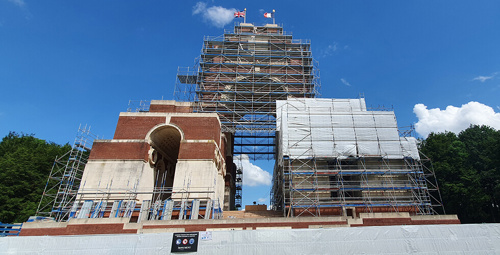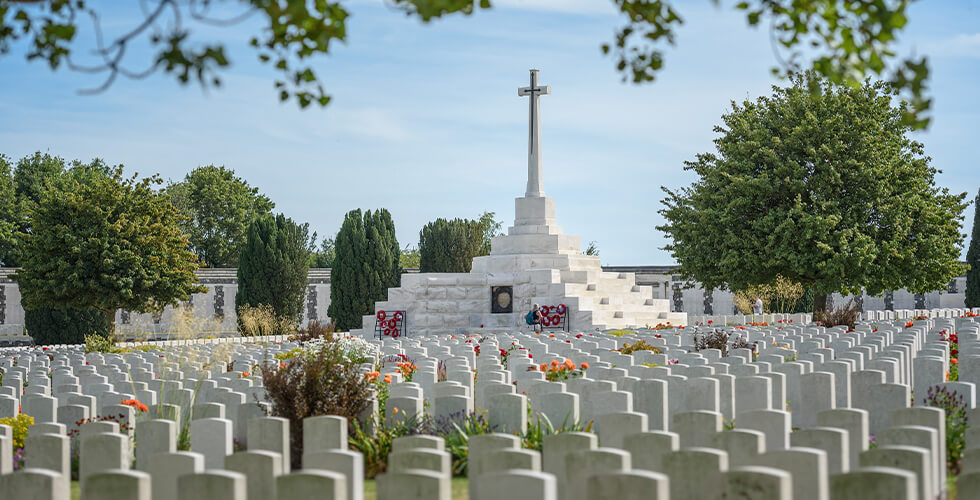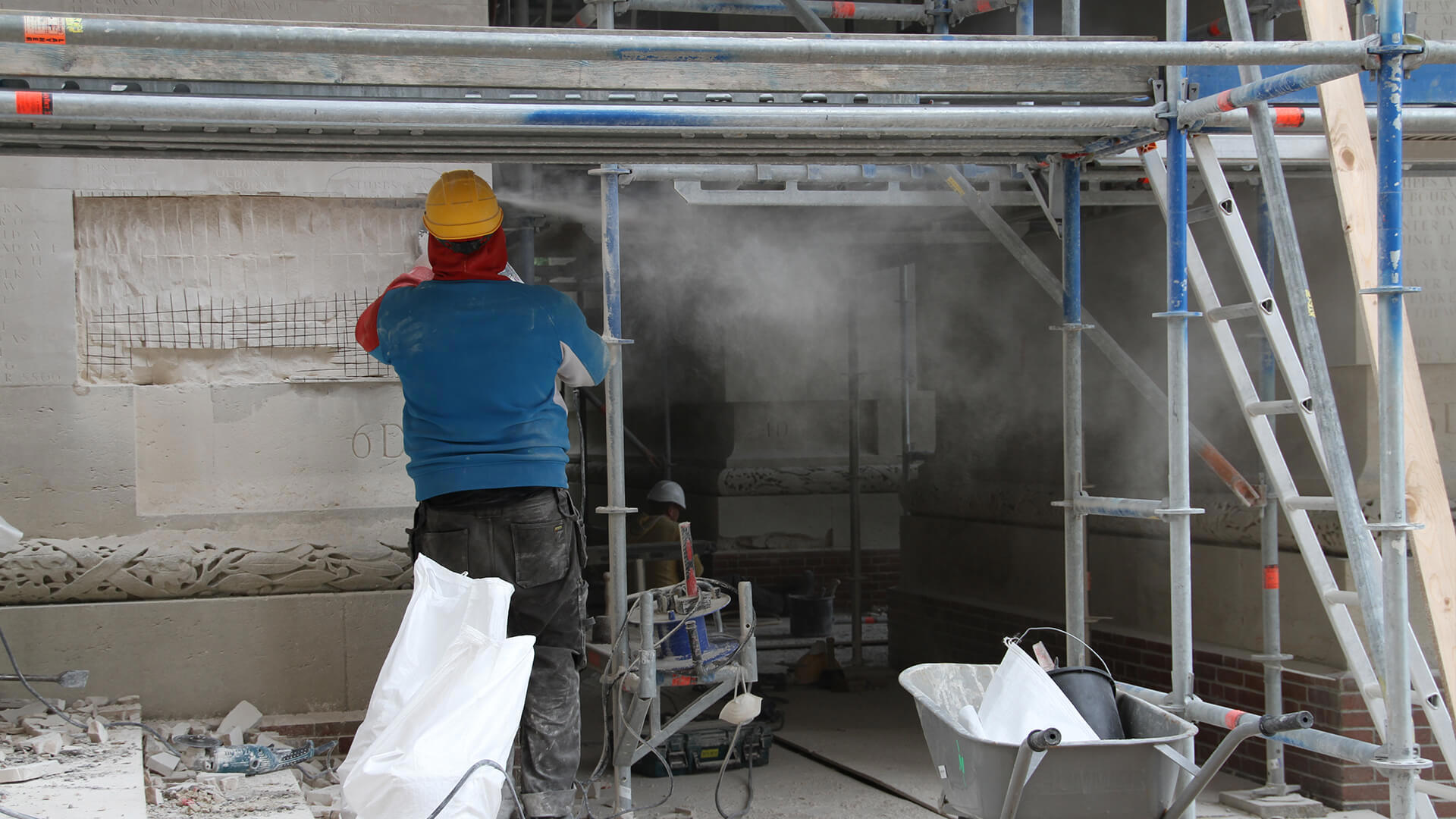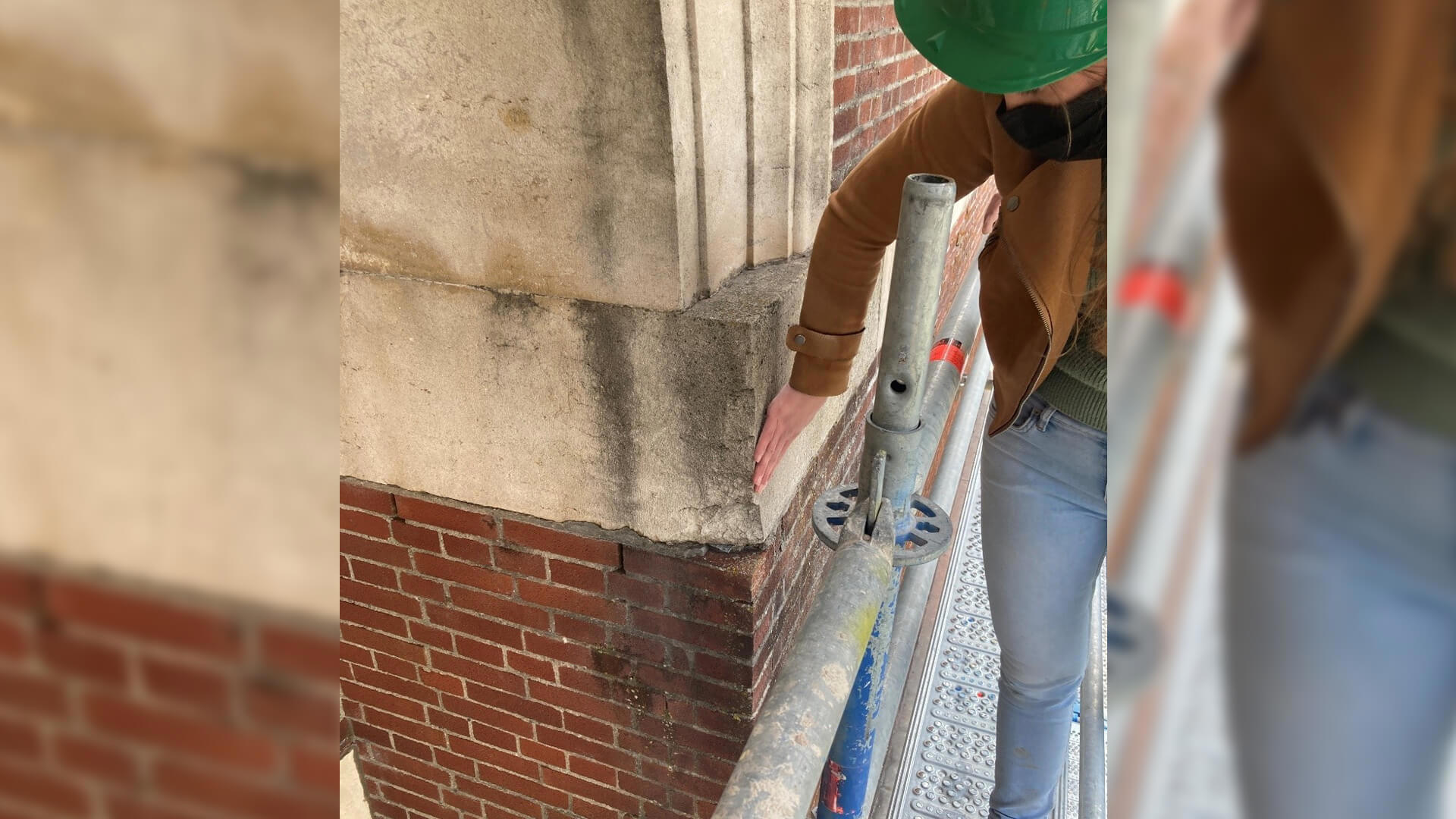02 July 2021
Restoring the Thiepval Memorial on the former Somme Battlefield
Since March this year, a major restoration of CWGC’s Thiepval Memorial has been underway. Project Manager, Sarah Camerlynck, explains her role and the work that’s happening to ensure that the memorial is maintained for generations to come.

For most visitors to the Thiepval Memorial, the first experience they have is to look up - its grand arches and the imposing panels with name after name of missing men rising into the roof.
But the memorial’s story began underground. Back in 1929, the massive work to build this iconic structure started with the digging of a 7-metre-deep pit into the solid chalk soil of the Somme.
Today, we are back down in those depths, protecting what stands above. In the basement, dividing a network of chambers and water channels is the brick, steel and concrete that carries the weight of the 45m high monument. We are checking these structures are still in a sound condition, with the help of specialists.
Back above the ground, we’re restoring the facades of the memorial. Originally French engineering brick, specially produced for Thiepval, was used in combination with white natural stone (Massangis from France and Portland from England).
I am not the first project manager working on a major restoration campaign of Thiepval Memorial. Back in the 50’s and again in the 60’s and 70’s the memorial has been in scaffolding to replace the outer skin. Previous workers introduced a small cavity between the outer and inner structure of the building, so we are now adding more than 1,800 wall ties to ensure a proper connection between both.
We’re also preserving the brick masonry by replacing the joints and repointing the facades. When restoring a memorial like this, conservation is always our priority. That means repairing, not replacing, wherever possible. However, some of the bricks are too damaged meaning that we need to insert new ones. To respect the designs of the memorial, we choose identical bricks, in colour, format and texture.
But if you look very closely you can still find traces of the original bricks. For example, the small tower on top of the memorial has never been changed. I was very impressed the first time I got up close to them as not only are they the original bricks, they also bear graffiti inscriptions with names and dates from the First World War.
As part of the restoration we’re assessing the 2,800 panels on the memorial which bear the names of more than 72,000 individuals. This is a slow process as it means that I need to go column by column, with the contractor, to check if each panel is still in good condition, and if the names are still legible. We aim to preserve the panels in situ as much possible, they have an exceptional emotional, commemorative and heritage significance.
Most of the panels are still in sound condition and only need minor repairs. This goes from grouting a crack to inserting a ‘bouchon’, which means inserting a small piece of natural stone to replace a damaged part of a panel.
However, in some cases the damage is too severe and it is no longer possible to preserve the panel. We then prepare everything for a replacement. I record the data, take dimensions, and photograph it. This kicks a whole process into action.
Firstly, this information is given to my colleagues in our drawing office who produce the inscription drawings for the new panel. Then on site the contractor can start taking out the weathered panel. At the same time, my colleagues in the Headstone Production Unit in Beaurains (France) create with great care the new panel which will be later installed at Thiepval.
Finally, we are also restoring the decorative and ornamental natural stone features, such as the crowns and wreaths. It’s easy to be overwhelmed by the scale and the big volumes of the memorial. Architectural historians have called this Lutyens’ ‘elemental mode’. But being on the scaffolding, assessing the natural stone features, I was touched by another more human side of Lutyens’ design, these smaller more intricate features.
Although they are high up on the memorial, the wreaths, bands and crowns have been carved in such a careful and detailed way, which contrasts the magnitude of the monument.
I take huge pride being part of the project team working to ensure the preservation of the Thiepval Memorial. It is very touching to see and strongly feel – even today 105 years on from the Battle of the Somme - how architecture was used as an antidote to the human suffering of the Great War. Architecture that, with a little care and attention, will still be here in another century, telling its story to new generations.














